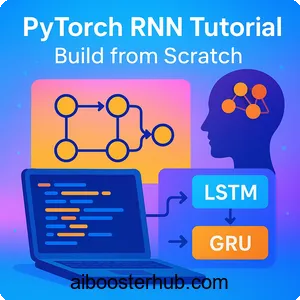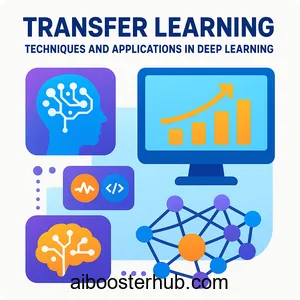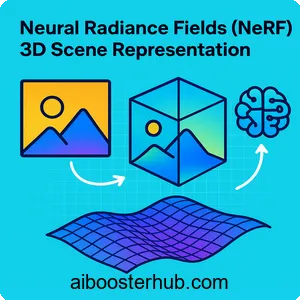Advanced SVM: Kernels, One-Class SVM, and SVR
Support Vector Machines have revolutionized machine learning by offering powerful solutions for classification and regression problems. While basic linear SVMs provide a solid foundation, real-world data often demands more sophisticated approaches. This comprehensive guide explores advanced SVM techniques including kernel methods, one-class SVM for anomaly detection, and support vector regression that extend the capabilities of traditional support vector machines far beyond simple linear boundaries.

Content
Toggle1. Understanding the kernel trick and svm kernel functions
The kernel trick represents one of the most elegant solutions in machine learning, allowing SVMs to handle non-linear decision boundaries without explicitly computing high-dimensional feature transformations. This mathematical innovation transforms the way we approach complex classification problems.
The mathematical foundation of kernels
At its core, the kernel trick exploits the fact that many algorithms only need to compute dot products between data points. Instead of explicitly mapping data to a higher-dimensional space using a transformation \(\phi(x)\), we can use a kernel function \(K(x_i, x_j)\) that computes the dot product in that space directly:
$$ K(x_i, x_j) = \phi(x_i)^T \phi(x_j) $$
This elegant formulation means we never need to compute or store the high-dimensional representations explicitly. The svm kernel function handles all the complexity internally, making computations tractable even for infinite-dimensional spaces.
Popular kernel functions in practice
Different kernel functions create different decision boundaries, each suited to particular types of data patterns. The linear kernel serves as the baseline:
$$ K(x_i, x_j) = x_i^T x_j $$
The polynomial kernel introduces non-linearity through polynomial combinations, controlled by the degree parameter (d):
$$ K(x_i, x_j) = (\gamma x_i^T x_j + r)^d $$
The RBF kernel, also known as the Gaussian kernel, is perhaps the most widely used due to its flexibility and ability to create complex decision boundaries:
$$ K(x_i, x_j) = \exp(-\gamma ||x_i – x_j||^2) $$
The sigmoid kernel mimics neural networks by using a hyperbolic tangent function, providing yet another way to capture non-linear relationships in data.
Implementing kernels with sklearn svm
The scikit-learn library makes working with different kernels remarkably straightforward. Here’s a practical example demonstrating how different kernels handle the same dataset:
import numpy as np
from sklearn import svm
from sklearn.datasets import make_circles
import matplotlib.pyplot as plt
# Generate non-linearly separable data
X, y = make_circles(n_samples=300, noise=0.1, factor=0.3, random_state=42)
# Create SVM models with different kernels
kernels = ['linear', 'poly', 'rbf', 'sigmoid']
svm_models = {}
for kernel_name in kernels:
if kernel_name == 'poly':
model = svm.SVC(kernel=kernel_name, degree=3, gamma='auto')
else:
model = svm.SVC(kernel=kernel_name, gamma='auto')
model.fit(X, y)
svm_models[kernel_name] = model
print(f"{kernel_name.capitalize()} Kernel Accuracy: {model.score(X, y):.3f}")
# Visualize decision boundaries
def plot_decision_boundary(model, X, y, title):
h = 0.02
x_min, x_max = X[:, 0].min() - 0.5, X[:, 0].max() + 0.5
y_min, y_max = X[:, 1].min() - 0.5, X[:, 1].max() + 0.5
xx, yy = np.meshgrid(np.arange(x_min, x_max, h),
np.arange(y_min, y_max, h))
Z = model.predict(np.c_[xx.ravel(), yy.ravel()])
Z = Z.reshape(xx.shape)
plt.contourf(xx, yy, Z, alpha=0.4, cmap='RdYlBu')
plt.scatter(X[:, 0], X[:, 1], c=y, cmap='RdYlBu', edgecolors='black')
plt.title(title)
plt.xlabel('Feature 1')
plt.ylabel('Feature 2')
# Display results
fig, axes = plt.subplots(2, 2, figsize=(12, 10))
for idx, (kernel_name, model) in enumerate(svm_models.items()):
plt.subplot(2, 2, idx + 1)
plot_decision_boundary(model, X, y, f'{kernel_name.capitalize()} Kernel')
plt.tight_layout()
plt.show()
This code demonstrates how the rbf kernel excels at capturing the circular pattern in the data, while the linear kernel struggles with non-linear boundaries. The polynomial kernel offers a middle ground, and the sigmoid kernel provides yet another perspective on the classification problem.
Choosing the right kernel for your data
Selecting an appropriate kernel requires understanding both your data’s structure and computational constraints. The linear kernel works best for linearly separable data or high-dimensional sparse data like text. The rbf kernel serves as an excellent default choice for most problems, offering flexibility without requiring explicit feature engineering. The polynomial kernel suits problems where you expect polynomial relationships between features, though higher degrees can lead to overfitting. Experimenting with different kernels and using cross-validation remains the most reliable approach to kernel selection.
2. Mastering one-class svm for anomaly detection
One-class SVM represents a paradigm shift in classification, designed specifically for scenarios where you have abundant examples of one class but few or no examples of other classes. This makes it invaluable for anomaly detection, novelty detection, and outlier identification.
The conceptual framework of one class svm
Unlike traditional SVMs that find a hyperplane separating two classes, one-class SVM learns a boundary around the normal data. It essentially asks: “What region of feature space contains most of my training data?” Everything outside this region is considered anomalous or novel.
The algorithm works by mapping data to a high-dimensional space and finding the smallest hypersphere that contains most of the data points. In mathematical terms, it solves an optimization problem that maximizes the distance from the origin to the separating hyperplane while ensuring most training points lie on the origin’s side:
$$ \min_{w, \xi, \rho} \frac{1}{2}||w||^2 + \frac{1}{\nu n}\sum_{i=1}^{n}\xi_i – \rho $$
Subject to the constraints:
$$ w^T\phi(x_i) \geq \rho – \xi_i, \quad \xi_i \geq 0 $$
The parameter \(\nu\) controls the trade-off between maximizing the distance from the origin and ensuring that most training points are included, effectively setting an upper bound on the fraction of outliers.
Practical anomaly detection with one-class svm
Let’s implement a real-world anomaly detection system for identifying unusual network traffic patterns:
from sklearn.svm import OneClassSVM
from sklearn.preprocessing import StandardScaler
from sklearn.datasets import make_blobs
import numpy as np
import matplotlib.pyplot as plt
# Simulate normal network traffic data
np.random.seed(42)
n_samples = 300
n_outliers = 30
# Generate normal traffic patterns
X_normal = make_blobs(n_samples=n_samples, centers=1,
cluster_std=0.5, center_box=(0, 0),
random_state=42)[0]
# Generate anomalous traffic (outliers)
X_outliers = np.random.uniform(low=-4, high=4, size=(n_outliers, 2))
# Combine data
X_train = X_normal
X_test = np.vstack([X_normal, X_outliers])
# Standardize features for better performance
scaler = StandardScaler()
X_train_scaled = scaler.fit_transform(X_train)
X_test_scaled = scaler.transform(X_test)
# Train one-class SVM with RBF kernel
# nu parameter: expected proportion of outliers
one_class_model = OneClassSVM(kernel='rbf', gamma='auto', nu=0.1)
one_class_model.fit(X_train_scaled)
# Predict: +1 for inliers, -1 for outliers
predictions = one_class_model.predict(X_test_scaled)
# Calculate anomaly scores (negative values indicate anomalies)
anomaly_scores = one_class_model.decision_function(X_test_scaled)
print(f"Detected anomalies: {np.sum(predictions == -1)} out of {len(predictions)}")
print(f"True outliers in test set: {n_outliers}")
# Visualize results
plt.figure(figsize=(12, 5))
# Plot 1: Classification results
plt.subplot(1, 2, 1)
plt.scatter(X_test_scaled[predictions == 1, 0],
X_test_scaled[predictions == 1, 1],
c='blue', label='Normal', alpha=0.6)
plt.scatter(X_test_scaled[predictions == -1, 0],
X_test_scaled[predictions == -1, 1],
c='red', label='Anomaly', alpha=0.6, marker='x', s=100)
plt.title('One-Class SVM Anomaly Detection')
plt.xlabel('Feature 1 (scaled)')
plt.ylabel('Feature 2 (scaled)')
plt.legend()
# Plot 2: Anomaly scores distribution
plt.subplot(1, 2, 2)
plt.hist(anomaly_scores[predictions == 1], bins=30,
alpha=0.6, label='Normal', color='blue')
plt.hist(anomaly_scores[predictions == -1], bins=30,
alpha=0.6, label='Anomaly', color='red')
plt.xlabel('Anomaly Score')
plt.ylabel('Frequency')
plt.title('Distribution of Anomaly Scores')
plt.legend()
plt.axvline(x=0, color='black', linestyle='--', label='Decision Boundary')
plt.tight_layout()
plt.show()
Tuning one-class svm parameters
The effectiveness of one-class SVM heavily depends on proper parameter tuning. The nu parameter deserves special attention as it represents the upper bound on the fraction of training errors and a lower bound on the fraction of support vectors. Setting nu too low creates an overly strict boundary that might classify normal variations as anomalies, while setting it too high allows too many outliers to be considered normal.
The gamma parameter in the rbf kernel controls the influence of individual training samples. Small gamma values create smooth decision boundaries that might miss subtle anomalies, while large values create complex boundaries that might overfit to training data noise. A systematic approach using cross-validation helps identify optimal parameter combinations.
Real-world applications of anomaly detection
One-class SVM excels in numerous practical scenarios. In fraud detection, it identifies unusual transaction patterns without requiring examples of fraudulent transactions. Manufacturing quality control uses it to detect defective products by learning the characteristics of normal products. Network security systems employ one-class SVM to identify potential cyber attacks by recognizing deviations from normal network behavior. Medical diagnosis benefits from anomaly detection when identifying rare diseases where few positive examples exist. The key advantage is that the svm model learns from normal behavior alone, making it applicable even when abnormal examples are scarce or impossible to obtain during training.
3. Support vector regression fundamentals
Support vector regression extends the SVM framework from classification to regression problems, predicting continuous values rather than discrete classes. This powerful adaptation maintains the core SVM principles while introducing concepts specifically tailored for regression tasks.
The epsilon-insensitive loss function
Traditional regression methods penalize any deviation from the predicted value. SVR introduces a more flexible approach through the epsilon-insensitive loss function, which ignores errors within an epsilon tube around the prediction:
$$ L_\epsilon(y, f(x)) = \begin{cases} 0 & \text{if } |y – f(x)| \leq \epsilon \ |y – f(x)| – \epsilon & \text{otherwise} \end{cases} $$
This formulation creates a tube of width (2\epsilon) around the regression function. Predictions falling within this tube incur no penalty, encouraging the model to focus on capturing the general trend rather than fitting every minor fluctuation in the training data. This approach naturally provides some robustness against noise and outliers.
The optimization problem for SVR seeks to find a function that stays within the epsilon tube while keeping the model as flat as possible:
$$ \min_{w,b} \frac{1}{2}||w||^2 + C\sum_{i=1}^{n}(\xi_i + \xi_i^*) $$
Subject to:
$$ y_i – (w^T\phi(x_i) + b) \leq \epsilon + \xi_i \ (w^T\phi(x_i) + b) – y_i \leq \epsilon + \xi_i^* \ \xi_i, \xi_i^* \geq 0 $$
The slack variables \(\xi_i\) and \(\xi_i^*\) allow points to fall outside the epsilon tube, with the parameter C controlling the penalty for such violations.
Implementing support vector regression
Let’s build a practical SVR model to predict housing prices based on various features:
from sklearn.svm import SVR
from sklearn.model_selection import train_test_split
from sklearn.preprocessing import StandardScaler
from sklearn.metrics import mean_squared_error, r2_score
import numpy as np
import matplotlib.pyplot as plt
# Generate synthetic housing data
np.random.seed(42)
n_samples = 200
# Features: square footage, number of rooms, age of house
square_footage = np.random.uniform(1000, 3000, n_samples)
rooms = np.random.randint(2, 6, n_samples)
age = np.random.uniform(0, 50, n_samples)
# Price formula with some noise
prices = (150 * square_footage/1000 + 20000 * rooms - 500 * age +
np.random.normal(0, 15000, n_samples))
X = np.column_stack([square_footage, rooms, age])
y = prices
# Split data
X_train, X_test, y_train, y_test = train_test_split(
X, y, test_size=0.2, random_state=42
)
# Scale features
scaler_X = StandardScaler()
scaler_y = StandardScaler()
X_train_scaled = scaler_X.fit_transform(X_train)
X_test_scaled = scaler_X.transform(X_test)
y_train_scaled = scaler_y.fit_transform(y_train.reshape(-1, 1)).ravel()
# Train SVR models with different kernels
kernels = ['linear', 'poly', 'rbf']
svr_models = {}
for kernel_name in kernels:
if kernel_name == 'poly':
model = SVR(kernel=kernel_name, degree=2, C=100, epsilon=0.1)
else:
model = SVR(kernel=kernel_name, C=100, epsilon=0.1)
model.fit(X_train_scaled, y_train_scaled)
svr_models[kernel_name] = model
# Make predictions
y_pred_scaled = model.predict(X_test_scaled)
y_pred = scaler_y.inverse_transform(y_pred_scaled.reshape(-1, 1)).ravel()
# Evaluate
mse = mean_squared_error(y_test, y_pred)
r2 = r2_score(y_test, y_pred)
print(f"\n{kernel_name.upper()} Kernel SVR:")
print(f" MSE: ${mse:,.2f}")
print(f" R² Score: {r2:.3f}")
print(f" Support Vectors: {len(model.support_)}")
# Visualize predictions vs actual for best model (RBF)
best_model = svr_models['rbf']
y_pred_scaled = best_model.predict(X_test_scaled)
y_pred = scaler_y.inverse_transform(y_pred_scaled.reshape(-1, 1)).ravel()
plt.figure(figsize=(12, 5))
# Plot 1: Predicted vs Actual
plt.subplot(1, 2, 1)
plt.scatter(y_test, y_pred, alpha=0.6)
plt.plot([y_test.min(), y_test.max()],
[y_test.min(), y_test.max()],
'r--', lw=2, label='Perfect Prediction')
plt.xlabel('Actual Price ($)')
plt.ylabel('Predicted Price ($)')
plt.title('SVR: Predicted vs Actual Housing Prices')
plt.legend()
# Plot 2: Residuals
plt.subplot(1, 2, 2)
residuals = y_test - y_pred
plt.scatter(y_pred, residuals, alpha=0.6)
plt.axhline(y=0, color='r', linestyle='--', lw=2)
plt.xlabel('Predicted Price ($)')
plt.ylabel('Residuals ($)')
plt.title('Residual Plot')
plt.tight_layout()
plt.show()
Key parameters in SVR tuning
The epsilon parameter defines the width of the epsilon tube and directly impacts model complexity. Larger epsilon values create wider tubes that ignore more training errors, leading to simpler models that may underfit. Smaller epsilon values demand tighter fits, potentially leading to overfitting. The optimal epsilon often depends on the noise level in your data.
The C parameter balances model complexity against training errors outside the epsilon tube. High C values heavily penalize errors, pushing the model to fit the training data more closely but risking overfitting. Low C values prioritize model simplicity, potentially at the cost of prediction accuracy.
The kernel choice and its parameters play crucial roles similar to classification SVMs. The rbf kernel’s gamma parameter particularly influences the model’s flexibility and generalization ability.
4. Advanced techniques and practical considerations
Moving beyond basic implementations, several advanced techniques can significantly enhance SVM performance and applicability to complex real-world problems.
Grid search and hyperparameter optimization
Finding optimal parameters for any svm model requires systematic exploration of the parameter space. Grid search provides a straightforward approach:
from sklearn.model_selection import GridSearchCV
from sklearn.svm import SVC
from sklearn.datasets import make_classification
# Generate sample data
X, y = make_classification(n_samples=500, n_features=10,
n_informative=8, n_redundant=2,
random_state=42)
# Split data
X_train, X_test, y_train, y_test = train_test_split(
X, y, test_size=0.2, random_state=42
)
# Define parameter grid
param_grid = {
'C': [0.1, 1, 10, 100],
'gamma': ['scale', 'auto', 0.001, 0.01, 0.1],
'kernel': ['rbf', 'poly']
}
# Perform grid search
grid_search = GridSearchCV(
SVC(),
param_grid,
cv=5,
scoring='accuracy',
n_jobs=-1,
verbose=1
)
grid_search.fit(X_train, y_train)
print(f"Best parameters: {grid_search.best_params_}")
print(f"Best cross-validation score: {grid_search.best_score_:.3f}")
print(f"Test set score: {grid_search.score(X_test, y_test):.3f}")
# Access the best model
best_svm = grid_search.best_estimator_
For larger parameter spaces or limited computational resources, randomized search provides an efficient alternative, sampling parameter combinations randomly rather than exhaustively testing all possibilities.
Handling imbalanced datasets
Many real-world classification problems involve imbalanced classes where one class significantly outnumbers others. SVMs can be adapted to handle such scenarios through class weighting:
from sklearn.svm import SVC
from sklearn.metrics import classification_report, confusion_matrix
# Simulate imbalanced data
X_majority = np.random.randn(900, 2) + [2, 2]
X_minority = np.random.randn(100, 2) + [0, 0]
X = np.vstack([X_majority, X_minority])
y = np.hstack([np.zeros(900), np.ones(100)])
# Split data
X_train, X_test, y_train, y_test = train_test_split(
X, y, test_size=0.2, random_state=42
)
# Standard SVM (biased toward majority class)
svm_standard = SVC(kernel='rbf', gamma='auto')
svm_standard.fit(X_train, y_train)
y_pred_standard = svm_standard.predict(X_test)
# Balanced SVM with class weights
svm_balanced = SVC(kernel='rbf', gamma='auto', class_weight='balanced')
svm_balanced.fit(X_train, y_train)
y_pred_balanced = svm_balanced.predict(X_test)
print("Standard SVM Performance:")
print(classification_report(y_test, y_pred_standard))
print("\nBalanced SVM Performance:")
print(classification_report(y_test, y_pred_balanced))
The class_weight=’balanced’ parameter automatically adjusts weights inversely proportional to class frequencies, ensuring the minority class receives appropriate attention during training.
Feature scaling and preprocessing
SVMs are sensitive to feature scales because they rely on distance calculations in feature space. Proper preprocessing significantly impacts model performance:
from sklearn.preprocessing import StandardScaler, MinMaxScaler, RobustScaler
from sklearn.pipeline import Pipeline
# Create preprocessing pipelines
pipelines = {
'StandardScaler': Pipeline([
('scaler', StandardScaler()),
('svm', SVC(kernel='rbf', gamma='auto'))
]),
'MinMaxScaler': Pipeline([
('scaler', MinMaxScaler()),
('svm', SVC(kernel='rbf', gamma='auto'))
]),
'RobustScaler': Pipeline([
('scaler', RobustScaler()),
('svm', SVC(kernel='rbf', gamma='auto'))
])
}
# Generate data with different scales
X = np.column_stack([
np.random.randn(300) * 1000, # Large scale feature
np.random.randn(300) * 0.01 # Small scale feature
])
y = (X[:, 0] + X[:, 1] * 1000 > 0).astype(int)
X_train, X_test, y_train, y_test = train_test_split(
X, y, test_size=0.2, random_state=42
)
# Compare scalers
for name, pipeline in pipelines.items():
pipeline.fit(X_train, y_train)
score = pipeline.score(X_test, y_test)
print(f"{name} accuracy: {score:.3f}")
StandardScaler works best for normally distributed features, MinMaxScaler suits bounded data, and RobustScaler handles outliers effectively by using median and interquartile ranges.
5. Comparing SVMs with other machine learning approaches
Understanding when to use SVMs versus alternative algorithms helps make informed model selection decisions.
SVMs versus neural networks
Support vector machines and neural networks both create non-linear decision boundaries through different mechanisms. SVMs use kernel functions to implicitly work in high-dimensional spaces, while neural networks explicitly learn feature representations through hidden layers. SVMs typically require less data to train effectively and have fewer hyperparameters to tune, making them more accessible for smaller datasets. Neural networks excel with massive datasets where their capacity to learn complex representations shines.
The training process differs fundamentally: SVM optimization is a convex problem with guaranteed global optima, while neural network training navigates non-convex loss landscapes with potential local minima. This makes SVM training more predictable and reproducible. However, neural networks’ flexibility allows them to capture extremely complex patterns that SVMs might miss.
SVMs versus decision trees and random forests
Decision trees create interpretable rules through recursive partitioning, offering clear explanations for predictions. Random forests ensemble multiple trees, improving accuracy while maintaining reasonable interpretability. SVMs provide powerful non-linear classification but sacrifice interpretability for performance.
The computational considerations differ significantly: decision trees train quickly and make fast predictions, while SVMs become computationally expensive with large datasets. Random forests parallelize easily, offering practical advantages for big data scenarios. However, SVMs often achieve better performance on medium-sized datasets, particularly in high-dimensional spaces where trees might struggle.
Feature importance emerges naturally from tree-based models, while extracting similar insights from SVMs requires additional analysis. This makes random forests particularly attractive when understanding feature contributions matters as much as prediction accuracy.
6. Real-world case studies and applications
Examining concrete applications demonstrates how advanced SVM techniques solve practical problems across diverse domains.
Text classification and sentiment analysis
SVMs have proven remarkably effective for text classification tasks, where high-dimensional sparse feature spaces present challenges for many algorithms. Consider a sentiment analysis system for product reviews:
from sklearn.svm import LinearSVC
from sklearn.feature_extraction.text import TfidfVectorizer
from sklearn.pipeline import Pipeline
from sklearn.metrics import accuracy_score, classification_report
# Sample product reviews
reviews = [
"This product exceeded my expectations, absolutely love it!",
"Terrible quality, broke after one day of use",
"Good value for the price, works as described",
"Waste of money, very disappointed with this purchase",
"Amazing quality and fast shipping, highly recommend",
"Not worth it, several features don't work properly"
]
sentiments = [1, 0, 1, 0, 1, 0] # 1: positive, 0: negative
# Create text classification pipeline
text_clf = Pipeline([
('tfidf', TfidfVectorizer(max_features=1000, ngram_range=(1, 2))),
('clf', LinearSVC(C=1.0, max_iter=1000))
])
# For demonstration, we'll use the same data for training and testing
# In practice, always use separate train/test sets
text_clf.fit(reviews, sentiments)
# Predict on new reviews
new_reviews = [
"Excellent product, very satisfied with my purchase",
"Poor quality and bad customer service"
]
predictions = text_clf.predict(new_reviews)
print("Sentiment predictions:")
for review, sentiment in zip(new_reviews, predictions):
print(f" '{review}' → {'Positive' if sentiment == 1 else 'Negative'}")
The linear kernel excels in text classification because high-dimensional text representations often become linearly separable. The TF-IDF vectorization captures term importance while the linear SVC efficiently handles thousands of features.
Financial time series prediction with SVR
Support vector regression tackles time series forecasting by learning patterns in historical data. Consider predicting stock price movements:
from sklearn.svm import SVR
import numpy as np
import pandas as pd
# Generate synthetic stock price data
np.random.seed(42)
dates = pd.date_range(start='2023-01-01', periods=200, freq='D')
trend = np.linspace(100, 150, 200)
seasonality = 10 * np.sin(np.linspace(0, 4*np.pi, 200))
noise = np.random.normal(0, 3, 200)
prices = trend + seasonality + noise
# Create features: lagged prices and moving averages
def create_features(prices, lookback=5):
X, y = [], []
for i in range(lookback, len(prices)):
features = [
prices[i-1], # Previous day
prices[i-5], # 5 days ago
np.mean(prices[i-5:i]), # 5-day moving average
np.std(prices[i-5:i]) # 5-day volatility
]
X.append(features)
y.append(prices[i])
return np.array(X), np.array(y)
X, y = create_features(prices)
# Split into train and test
train_size = int(0.8 * len(X))
X_train, X_test = X[:train_size], X[train_size:]
y_train, y_test = y[:train_size], y[train_size:]
# Train SVR model
svr_model = SVR(kernel='rbf', C=100, epsilon=0.1, gamma='scale')
svr_model.fit(X_train, y_train)
# Make predictions
y_pred = svr_model.predict(X_test)
# Evaluate
mse = mean_squared_error(y_test, y_pred)
rmse = np.sqrt(mse)
print(f"RMSE: ${rmse:.2f}")
print(f"Mean absolute error: ${np.mean(np.abs(y_test - y_pred)):.2f}")
# Visualize predictions
plt.figure(figsize=(12, 6))
plt.plot(range(len(y_test)), y_test, label='Actual Prices', marker='o')
plt.plot(range(len(y_pred)), y_pred, label='Predicted Prices', marker='x')
plt.xlabel('Days')
plt.ylabel('Price ($)')
plt.title('Stock Price Prediction using SVR')
plt.legend()
plt.grid(True, alpha=0.3)
plt.show()
Financial prediction demands careful feature engineering and parameter tuning. The rbf kernel captures non-linear patterns in price movements, while the epsilon parameter allows some tolerance for market noise.
Medical diagnosis using one-class SVM
Anomaly detection through one-class SVM proves invaluable in medical diagnostics where disease cases are rare. Consider detecting rare cardiac abnormalities from ECG signals:
from sklearn.svm import OneClassSVM
from sklearn.preprocessing import StandardScaler
# Simulate ECG features: heart rate variability, QT interval, PR interval
np.random.seed(42)
# Normal ECG patterns
normal_hr = np.random.normal(75, 10, 450) # Heart rate
normal_qt = np.random.normal(400, 20, 450) # QT interval
normal_pr = np.random.normal(160, 15, 450) # PR interval
X_normal = np.column_stack([normal_hr, normal_qt, normal_pr])
# Simulate some abnormal patterns (for testing only, not used in training)
abnormal_hr = np.random.normal(120, 15, 50) # Tachycardia
abnormal_qt = np.random.normal(500, 25, 50) # Prolonged QT
abnormal_pr = np.random.normal(220, 20, 50) # Prolonged PR
X_abnormal = np.column_stack([abnormal_hr, abnormal_qt, abnormal_pr])
# Prepare data
scaler = StandardScaler()
X_normal_scaled = scaler.fit_transform(X_normal)
X_abnormal_scaled = scaler.transform(X_abnormal)
# Train one-class SVM on normal patterns only
detector = OneClassSVM(kernel='rbf', gamma='auto', nu=0.05)
detector.fit(X_normal_scaled)
# Test on both normal and abnormal patterns
X_test = np.vstack([X_normal_scaled[:100], X_abnormal_scaled])
predictions = detector.predict(X_test)
# Analyze results
n_normal_correct = np.sum(predictions[:100] == 1)
n_abnormal_detected = np.sum(predictions[100:] == -1)
print(f"Normal patterns correctly identified: {n_normal_correct}/100")
print(f"Abnormal patterns detected: {n_abnormal_detected}/50")
print(f"Sensitivity: {n_abnormal_detected/50*100:.1f}%")
print(f"Specificity: {n_normal_correct/100*100:.1f}%")
This medical application demonstrates the power of one-class SVM when training data predominantly represents healthy patients. The model learns what “normal” looks like and flags deviations that might indicate cardiac abnormalities requiring further investigation.
7. Conclusion
Advanced SVM techniques extend far beyond basic linear classification, offering powerful tools for tackling complex machine learning challenges. The kernel trick enables SVMs to handle non-linear relationships without explicit feature transformations, while one-class SVM provides robust anomaly detection capabilities when labeled anomalies are scarce. Support vector regression adapts the SVM framework for continuous prediction tasks, maintaining the mathematical elegance and robustness that make SVMs attractive.
The sklearn implementation makes these sophisticated techniques accessible, allowing practitioners to leverage SVM power through intuitive APIs and well-documented parameters. Success with SVMs requires understanding the interplay between kernels, regularization parameters, and preprocessing strategies. Whether classifying text, detecting fraud, predicting stock prices, or identifying medical anomalies, SVMs remain essential tools in the modern machine learning toolkit, offering a balance of theoretical foundation and practical effectiveness that continues to prove valuable across diverse applications.









